I am about to bore the pants off of you by talking about wood sealants. Be forewarned. I really don’t know what good it’s going to do you to read on, unless you like to make some kind of fool out of yourself. That, or you want to pick up some information about sealing/sizing wood panels for fine art – because this isn’t a blog about cabinetry. I wouldn’t know the first thing about sealing that kind of wood, would I?
Anyway, over the last week I have been researching out how to construct my new ideas because, like my oil paintings on the birch panels, I want to be able to partially show the sealed wood on the painting itself, like so:
I have always sealed these panels in a specific way. It hasn’t been the easiest, but it’s the only proper way to do it, especially since I paint in oils.
The panels I use are made by Craig Stratton at Beagle Easle. They are cradled on 1 3/4″ hardwood and Craig usually picks out a nice, single piece of birch for me since he knows I’m not covering them with white gesso. They’re beautiful, and he will deliver if I want. That makes it even more beautiful.
I will give them a last light sand before I start sealing, even though they essentially arrive perfect with a nice smooth sanded finish. I don’t even break out my electric palm sander yet. I’m mostly just cleaning the dust off with a hand block sander and a clean rag.
Once they are crystal clean, that’s when I paint on my concoction of four parts Zinsser shellac to three parts DH alcohol with a high-quality, synthetic bristle brush. I am a fan of the 2″ Wooster Shortcut:
It has a flexible rubber handle that doesn’t come up much above the palm of your hand, so your wrist is doing the work instead of a stick working your wrist. It’s just an easier way to get even strokes.
I won’t lie. The first coat of this stuff is rather plentiful, but not ridiculous. It still has to be even and smooth. That the wood is going to suck up that first coat like crazy because, well, it’s just so thirsty.
I will wait at least an hour before I go to sand that top coat. I have to be able to drag my hand across the whole surface and make sure it is dry as a bone before I will even consider taking that palm sander to it. None of it can be remotely damp.
Then goes a smooth, light surface sand. Then a wipe down, and then another thin coat of the shellac mixture this time. In fact, the coats get thinner and thinner every time I go through this cycle. And I will go through it about five times, depending on how it’s looking. It just has to look even and beautiful, and as flawless as I can get it.
Have I ever sealed a panel absolutely perfectly? No. But I am a perfectionist. I try to each and every time.
All of this mumbo jumbo just to give you some back story on how I then go straight from here to the oil painting process. What I could never do is paint on top of that shellac: gesso or acrylic paint.
The rule is that you can paint oils on top of dry acrylic/water-based media, but not the other way around. I guess oil is not a great support. It usually only binds to itself. Acrylics, on the other hand, make a great support and oils will bind to it without any issue. It’s just the way it is.
I’m not a chemist, although I pretend to be. My guess though is that oils have a longer life. I mean longer than anyone really thinks they have. They are kind of alive forever. Even when they seem dry, I think they still live and still eat and seep through their supports, which is why you have to seal and gesso whatever surface you are going to paint them on.
Have you ever put oil paint on raw canvas? Not only will it have a hard time binding, but it will continually seep and cause a stain around where you intended to put the color. And that’s not good.
Then, if you put acrylic on top of an oil based support, the oil will also eat through that thinner layer of acrylic and the acrylic will start to crackle, and likely start to flake off. Great effect if you are trying to distress furniture though, or going for that in art too. Seal it up on top so it does fall all the way off and you’ll have yourself that crackle effect. It does look pretty cool if that’s what you’re trying to do:
Anyway, I seem to know what I’m doing with all of that, I suppose. Although, there was sometime ago when I wanted to stick down some round pieces of painted pattern paper. This was back in 2006:
and again in 2008:
Those “black holes” are pattern paper painted black, and I had to use a clear acrylic polymer as the adhesive. But how??
I had to sand out the circles by hand, and by finger, so it would stick.
Do I want to do that again? Nope. Which is too bad because I really liked those. I also sold them all, now that I am thinking about it. Not that this would be my motivation to make more, but it’s interesting to know.
So, now I want to make a new series of mixed media paintings that use a few things on the wood panels, showing some of the wood. And you know, I still haven’t even decided if I want to show the wood or not, but I just want it to be an option that can be open to me if I feel like taking it.
But I need it all to be acrylic and oil friendly. Which means, if it’s acrylic friendly, it will also be oil friendly too. I am going to be using some collage, like the same industrial pattern paper – some painted, some not, fabric swatches, news clippings, photographs, tissue patterns, and oil and acrylic paint.
They are going to be roughly based on bits of architecture among the landscape of Joshua Tree, which might also include other (un)natural items, not just architecture. Anyway, they are abstract pieces so you won’t know what they are.
My point of this post though was to find a wood sealer I could use. I really didn’t know one existed until I researched it out, then confirmed it on the WetCanvas forum. The problem was however, is that there is no Home Depot within 50 miles of me that carries it! But here’s the stuff:
I ordered it on Amazon, and the shit was expensive! Not only that, but I am waiting until the 30th before it’s even going to get here. (I don’t have Amazon Prime like all you fancy pants people do.)
So now I have to wait.
In the meantime, I will be putting more compositions together, like this one:
and start cutting out some interesting pieces of fabric. That’s the fun part.
And I have to say, that I STILL want to try to save that “Terrible Landscape.”
I was looking at it last night and there are definitely parts of it I really like. It’s just that there are more parts of it I really hate. It feels like I can’t save it because the paint that’s on the is so thick already (on the parts that suck) — but then I thought about some of my other paintings and how thick some of the paint is on those and it really isn’t so crazy for me to lay on another layer, and since it’s already trash, what do I have to lose? Except more of my sanity.
Here is a portion of the painting that I like. Hahaha!!! It is the bottom left:
Even looking at that much, I still think it sucks!

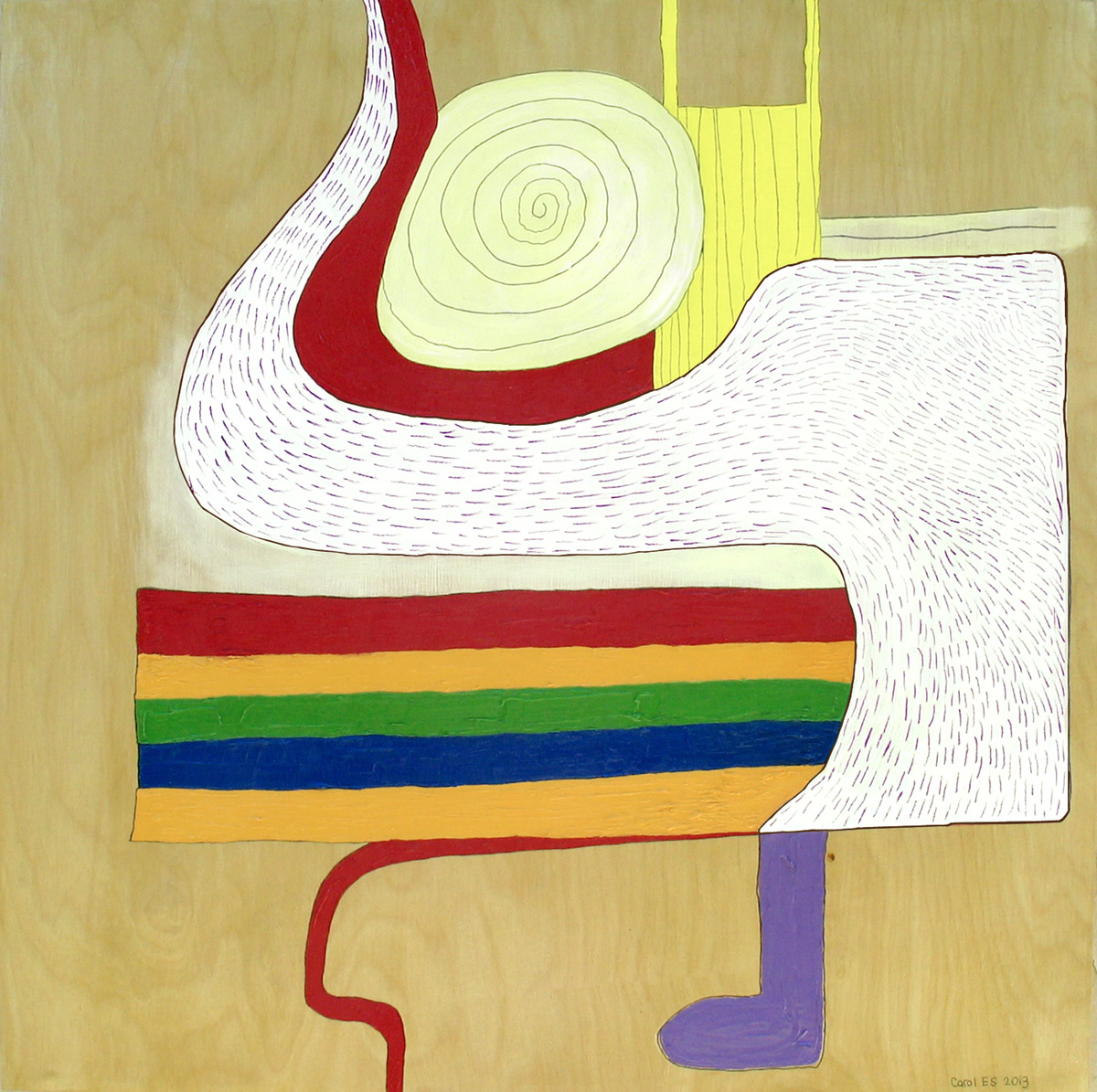
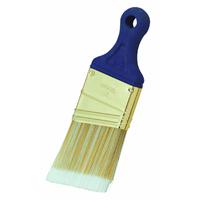



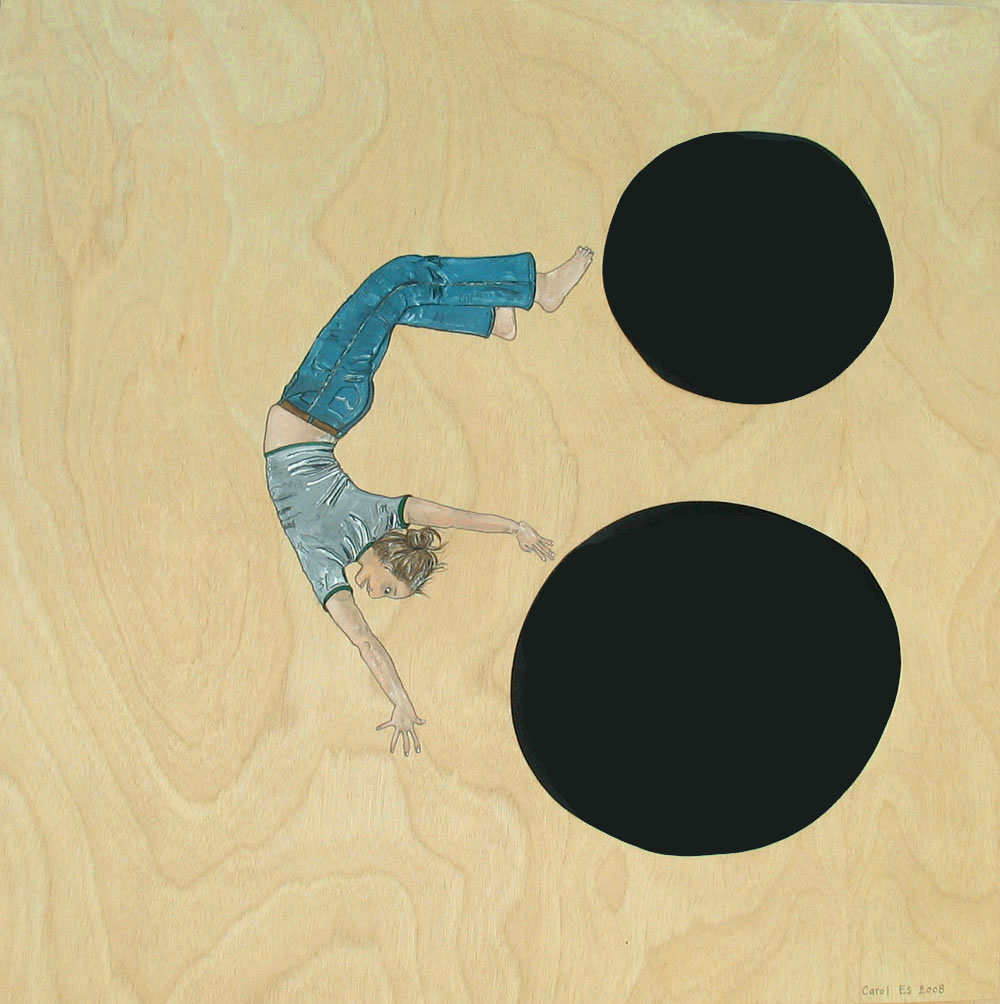
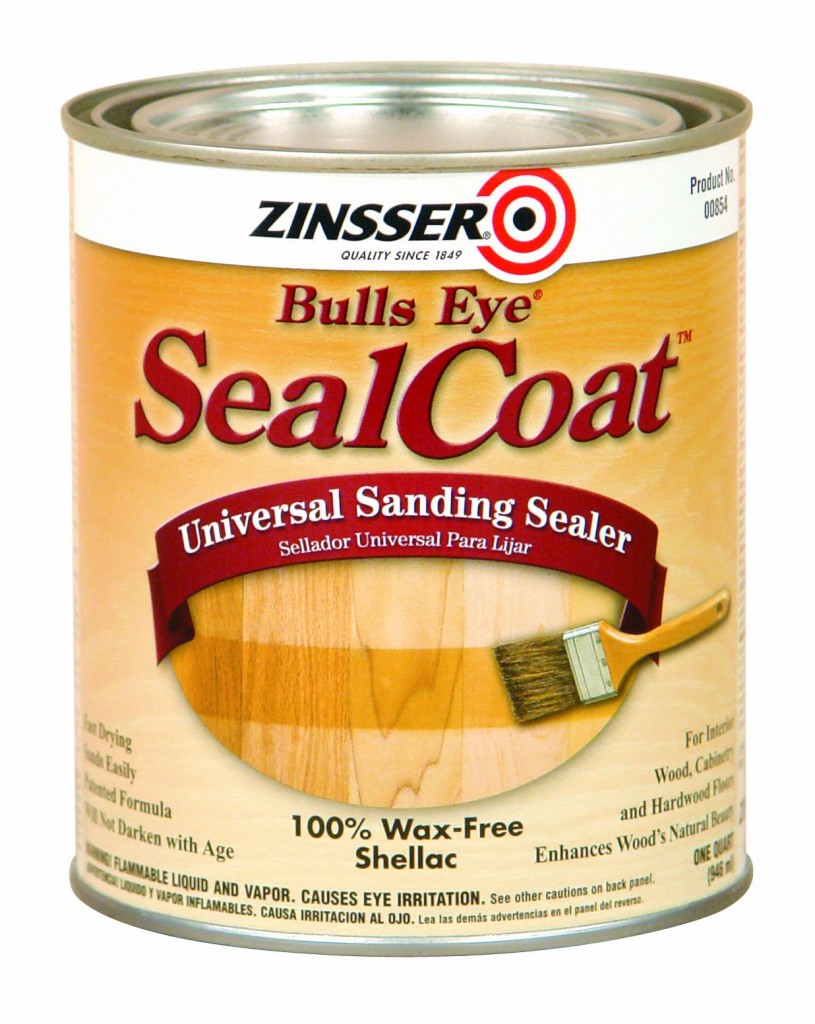
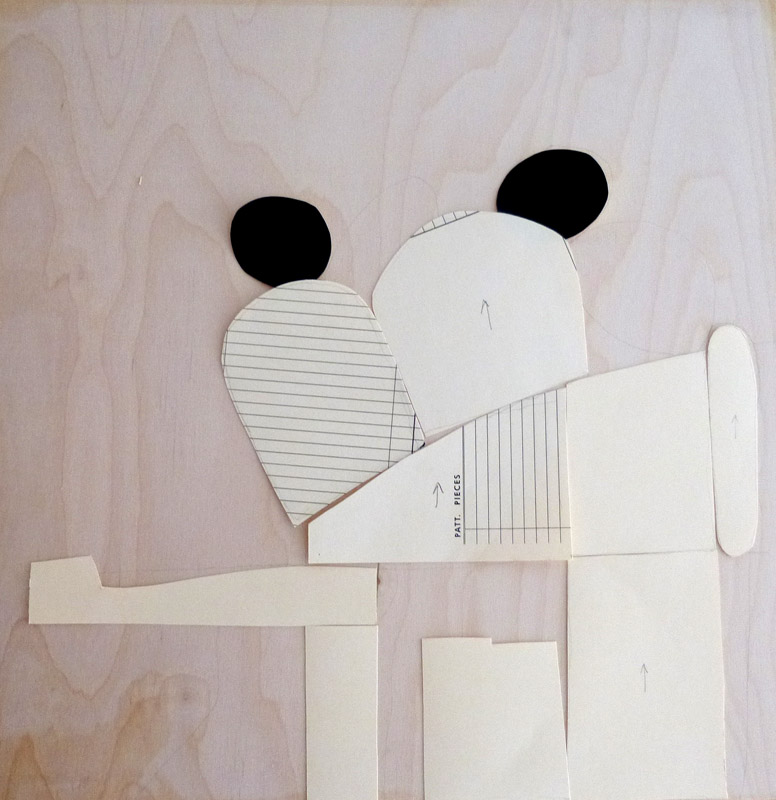

Hi there! I am looking for a good sealant for my birch panels, and read your post with interest. But the Zinnser Bullseye SealCoaat Universal Sanding Sealer is an oil-based formula. How can it work under acrylics?
Thank you for an interesting read, and I love your work!
Hi Taline,
Thanks for your comment and compliment.
You’d think this stuff was oil based, but it’s not. If it is, it has some other chemical in it that will not interfere with the adhesion of acrylic on top of it. Since I’ve written this post, I have been working on a whole series of birch panel pieces where I have been using an acrylic polymer on top of the sealer and it works like magic. You can read in the small print on the can once you get it that it will work. In fact, it even said I could essentially brush it on top of my birch panels that were already sealed in oil based shellac, but I was too scared to do it and I just sanded them down anyhow. I didn’t even test it – I suppose I should have/could have, but I wanted to start them from scratch.
You should try it on a panel and see how you like it. I am absolutely sold on it and am never going back to my old formula whether I use oils or acrylics on the panels.
Hope this helps.
🙂
Carol